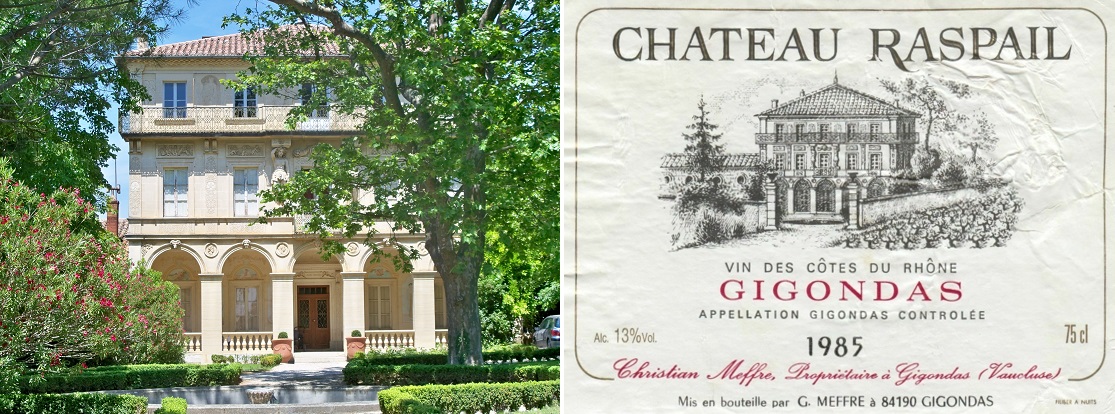Results
2,284 Results
Loading more Results ...
Loading more Results ...
| Gigondas AOC |
Description to Gigondas AOC
The AOC area for red wines, rosé wines and white wines is located in the southern section of the Rhône. It is classified as a cru (top appellation). As early as 1924, attempts were made to establish a separate designation of origin. At that time, the wine was still referred to somewhat disparagingly as "Châteauneuf-du-Pape des pauvres" (Châteauneuf-du-Pape of the poor). It is ready to drink a little earlier than its "big brother", but is also one of the great French red wines. The vineyards cover a total of 2,750 hectares, of which around 1,250 hectares are planted with vines. These are located exclusively in the municipality of Gigondas at the foot of the Dentelles de Montmirail mountain range in the department of Vaucluse.

The name is derived from the Latin Jucunditas (joy or well-being). This was a small town built by the Romans, which was probably a holiday resort. It is said that Pliny the Elder (23-79 AD) was already a lover of wine. In the 1860s, viticulture was significantly revitalised by the Raspail family, in particular by the lawyer and politician Eugène Raspail (1812-1888). He had inherited the "Domaine Le Colombier" (today's Château Raspail) from his father, acquired the "Domaine des Bosquets" in 1861 and marketed the wines to merchants from Valence, Lyon, Saint-Étienne and Paris via the port of Roquemaure. As a winegrower, his activities created the basis for the classification of the area as an appellation in 1971. From the 1870s onwards, the area was severely affected by phylloxera.

It was not until the early 1960s that vineyards were once again planted on slopes or large terraces. The slopes at 300 to 500 metres above sea level consist mainly of scree and limestone with a thin layer of clay. The flatter alluvial soils in the plain are interspersed with red clay (Terre Rouge) containing pebbles. The climate is Mediterranean with very warm temperatures in summer, which are cooled by the cold Mistral wind. The red wines, which account for 95% of production, are characterised by a strong, alcoholic and fruity character. They are blended from a maximum of 80% Grenache Noir (Garnacha Tinta), at least 15% Syrah and/or Mourvèdre, as well as all red varieties authorised in the Côtes du Rhône except Carignan Noir (Mazuelo). The same applies to rosé, with less strict rules.
Since the 2023 vintage, white wines have also been classified as AOC; the areas only cover around 16 hectares. The main variety is Clairette Blanche (Clairette), which accounts for at least 70%, but is also vinified as a single variety. It can be blended with the traditional white wine varieties of the Rhône Valley. These are Bourboulenc, Clairette Rose, Grenache Blanc (Garnacha Blanca), Marsanne, Piquepoul Blanc and Roussanne, as well as a maximum of 5% Viognier and Ugni Blanc (Trebbiano Toscano).
Well-known producers are Cave des vignerons de Gigondas (winegrowers' co-operative), Château de Montmirail, Château de Saint-Cosme, Château du Trignon, Château Raspail, Château Redortier, Château de Saint-Cosme, Clos du Joncuas, Domaine Amadieu, Domaine La Bouissière, Domaine Brusset, Domaine de Font-Sane, Domaine des Travers, Domaine du Cayron, Domaine du Grand Montmirail, Domaine du Pesquier, Domaine Raspail-Ay, Montirius and Domaine Notre Dame des Pallière.
Gigondas: par Jean-Marc Rosier from rosier, CC BY-SA 3.0, Lien
Château Raspail: by Véronique PAGNIER - Own work, Public domain, Link
Recent wines 60
 Domaine Brusset
— Rhône
2021 Gigondas AOC "Tradition Le Grand Montmirail"
19.00 €
Domaine Brusset
— Rhône
2021 Gigondas AOC "Tradition Le Grand Montmirail"
19.00 €

 Domaine Brusset
— Rhône
2021 Gigondas AOC "Les Hauts de Montmirail"
28.00 €
Domaine Brusset
— Rhône
2021 Gigondas AOC "Les Hauts de Montmirail"
28.00 €

More information in the magazine
- The vine nursery of the superstars Pépinière Viticole Bérillon
- A lot of power for little money In Focus: Côtes du Rhône Villages Rouge
- Liv-ex Power 100: California and the Rhône Less focus in the secondary market
- Saving your account with pleasure In Focus: Crozes-Hermitage
- The slope that never gives up In Focus: Côte-Rôtie
- "Finding your future by looking to the past Interview: Eve and Philippe Guigal in Côte-Rôtie talk about the implementation of innovative projects for the House
- Rhone In Focus: Costières de Nimes Deep in the West
- The (almost) invisible third party Rhone In Focus: The white wines of Saint-Péray
- The Sublime Rhone In Focus: Hermitage
- The all-rounder Rhône In Focus: Tavel

